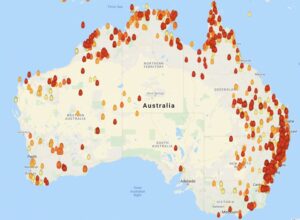Sep
3
Lomborg on Climate Change
“There are costly damages associated with climate change. But there are also costly damages associated with climate policies. Too many politicians and the media focus only on the former.” — Bjorn Lomborg

As I sometimes do, I’d like to share an excerpt or three from Hillsdale College’s Imprimis newsletter. This time it is from a speech/article by the controversial and sometimes iconoclastic Bjorn Lomborg, president of the Copenhagen Consensus Center, a visiting fellow at the Hoover Institution, and former director of the Danish government’s Environmental Assessment Institute. He has been writing on environmental issues and related economic impacts since at least 2001, when his book The Skeptical Environmentalist came out.
— — —
“I am a social scientist focused on the economics of this issue, not a scientist. There is scientific dispute over the extent to which global warming is manmade. I will not weigh in on that controversy, except to concede that global warming is real, to some large extent manmade, and a serious problem.
The degree of seriousness is obviously important to address…. But I think it can be easily demonstrated that climate change, however serious, is not [the equivalent of] an incoming giant meteor.
U.N. Secretary General António Guterres and many Western leaders, including the current administration in the U.S., tend toward the end-of-the-world point of view: ‘The world is facing a grave climate emergency. . . . Every week brings new climate-related devastation. Floods. Drought. Heatwaves. Wildfires. Superstorms. . . . We are in a battle for our lives. . . . Climate change is the biggest threat to the global economy.’ These claims are echoed endlessly in the media. But are they true?
Consider the supposed rise in ‘superstorms’ such as stronger hurricanes. What do we actually know? The annual number of hurricanes that make landfall in the U.S. since 1900 is slightly declining, not increasing. The same is true for major hurricanes (category three and above) hitting the U.S. We see the same thing if we look at world data for total hurricane energy in the satellite era, 1980-2022. In fact, 2022 was the second lowest recorded year. Did you hear that reported anywhere? No, because it doesn’t fit the dominant narrative.
What about the supposed increase in wildfires due to climate change? A typical example was the media coverage of the forest fires in Australia in 2019 and 2020, which left readers and viewers with the impression that almost all of Australia was burning. Looking at the satellite imagery, however, it was clear that although there were a lot of fires close to where the news crews lived in Sydney and Melbourne, it was one of the lowest levels of burning due to fire on record for Australia as a whole.

As for the amount of burned area due to fire on a global level, satellite data shows a dramatic decline over the past 25 years. Journals like Science and Nature have covered this story, but it’s not what you see on television or read in newspapers. Perhaps the implementation of a strong climate policy might reduce instances of fire, but even if we do nothing, the number of fires will almost certainly continue to decline. In other words, the world is not going to go up in flames, contrary to what you hear from politicians or read in The New York Times.
One of the reasons it is so difficult to have a sensible conversation about the climate is because we tend only to talk about what the climate will do, not what humans will do. Sticking with the example of fires, fires are declining because human beings are intelligent and actively try to suppress fires. Humans have a wonderful ability to adapt to circumstances, and we should include that fact in the climate conversation.
How many people die overall as a result of climate, i.e., because of floods, droughts, storms, wildfires, and extreme temperatures? In the 1920s, about 500,000 people died each year, on average, due to climate. Looking at the averages in subsequent decades — the number fluctuates quite a bit from year to year — there has been a dramatic decline. In the 2010s, the average number of people dying each year as a result of climate was 18,000, and in 2022, that number dropped to about 11,000. This downward trend doesn’t fit the alarmist narrative, so of course we never hear about it.
Why has this number dropped so dramatically? A big reason fewer people have been dying is that over the past century we have become wealthier. Because of that, we have the resources to develop better technology, which enables better predictive capabilities. This has nothing to do with climate and everything to do with human beings’ ability to adapt. The lesson to be drawn from this is that if a country wants to reduce the number of its citizens dying as a result of climate, it should pursue economic and technological development.
Also as a result of human beings’ ability to adapt, the global cost of climate damage as a percentage of GDP has been declining since 1990. The reason to measure this cost in terms of GDP is because, for example, if you have twice as many houses in an area that floods, the damage is going to be twice as much. This is a consequence not of the climate but of the fact that the people living in that area are much richer….
Around 1970, renewable energy production worldwide bottomed out at 13 or 14 percent, and it remained there until 2015 or so. Most of that 13-14 percent was located in poor countries that were still burning dung, cardboard, and wood to produce energy. And since then, despite all of the government action on climate change — including trillions of dollars in spending — renewable energy production only increased to nearly 16 percent in 2021. Even in the unlikely event that every nation joins in this effort — not just the U.S. and the countries of Western Europe, but China, India, and the countries of Africa — we will likely increase this number to at most 30 percent by 2050.

The claim is often made that it is possible to reach 100 percent or “net-zero” by 2050, but that’s highly unlikely, mainly because of the incredible cost and the economic damage it would do.
According to a recent study in Nature, to achieve a 20 percent emission reduction by 2050 would cost each American $75 per person, per year — and the costs rise exponentially from there. A 40 percent reduction would cost about $500 per person, per year; 60 percent would cost $2,000 per person, per year; and 80 percent would cost $5,000 per person, per year. Most people would be either unable or unwilling to spend that amount of money — not to mention unlikely to vote for those who advocate these policies.
In fact, even the most draconian measures couldn’t get us to net-zero by 2050, the purported aim of the Biden administration and many other Western governments. The most optimistic models suggest we could get to 95 percent, but that would cost more than $11,000 per person, per year….
[W]hen it comes to climate change, our focus should not be on policies that cost a lot, deliver little, and in the end likely don’t even work. Rather, we should focus our efforts on developing new technology and encouraging innovation that will lead to the production of affordable and dependable green energy. It is possible for us to have a sensible climate policy without breaking the bank and without sacrificing the amazing opportunities delivered by cheap and abundant energy.”
— — —
Unlike Lomborg, I am not completely convinced that global warming is “a serious problem” — at least, not anytime soon. That aside, and assuming that Lomborg’s numbers are correct and nothing important left out, his reasoning seems, well… reasonable. (Not thrilled with the carbon tax idea, though. (See full article.)) His tone is also a refreshing counter to the hysteria typically coming from the Left and MSM. But, then, as Lomborg concedes, if the sky was falling, the alarmist rhetoric from the likes of Alexandria Ocasio-Cortez would be justified. Fortunately, such is not warranted by the facts.
And, for the record, the biggest threat to the global economy is not climate change but rather the globalist agenda. But, that’s a topic for another day… #NoCentralBankDigitalCurrencies















